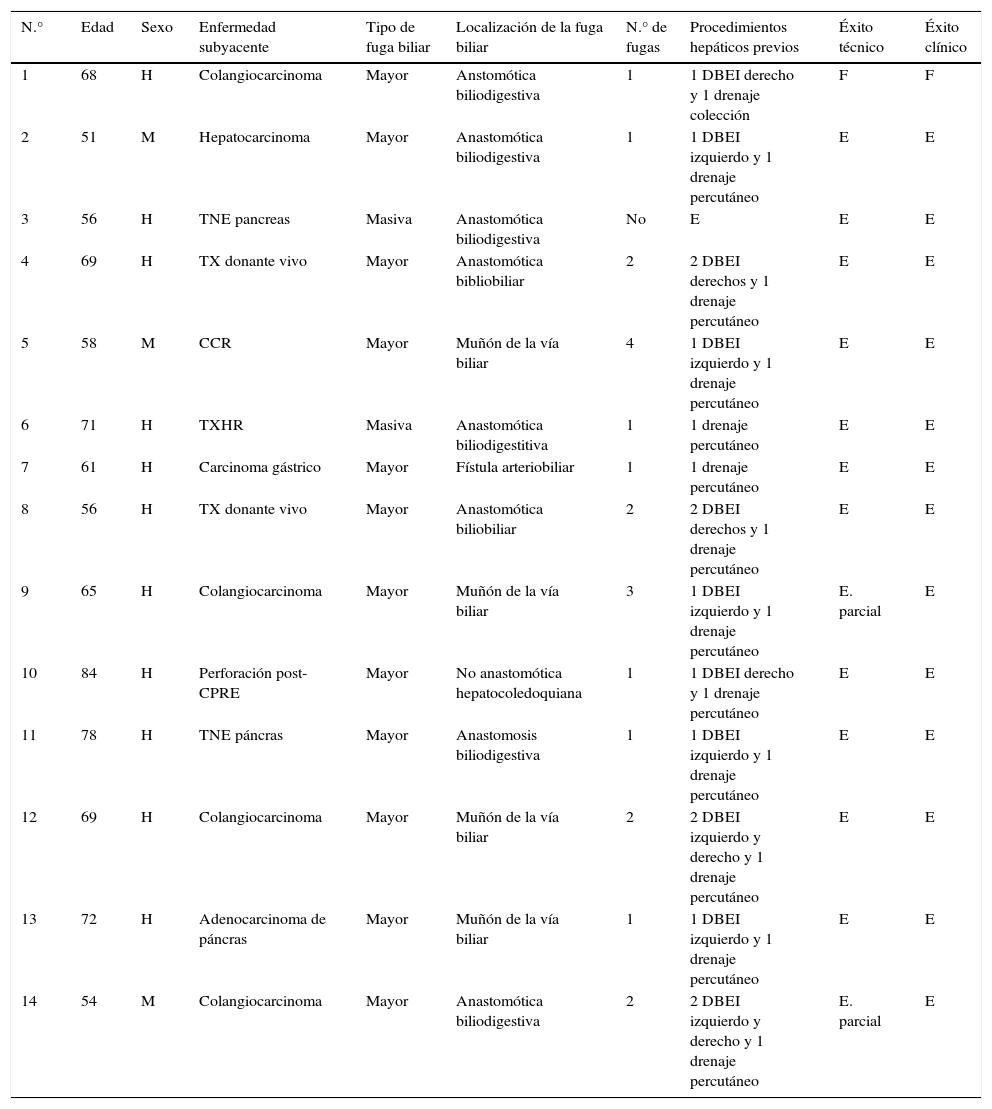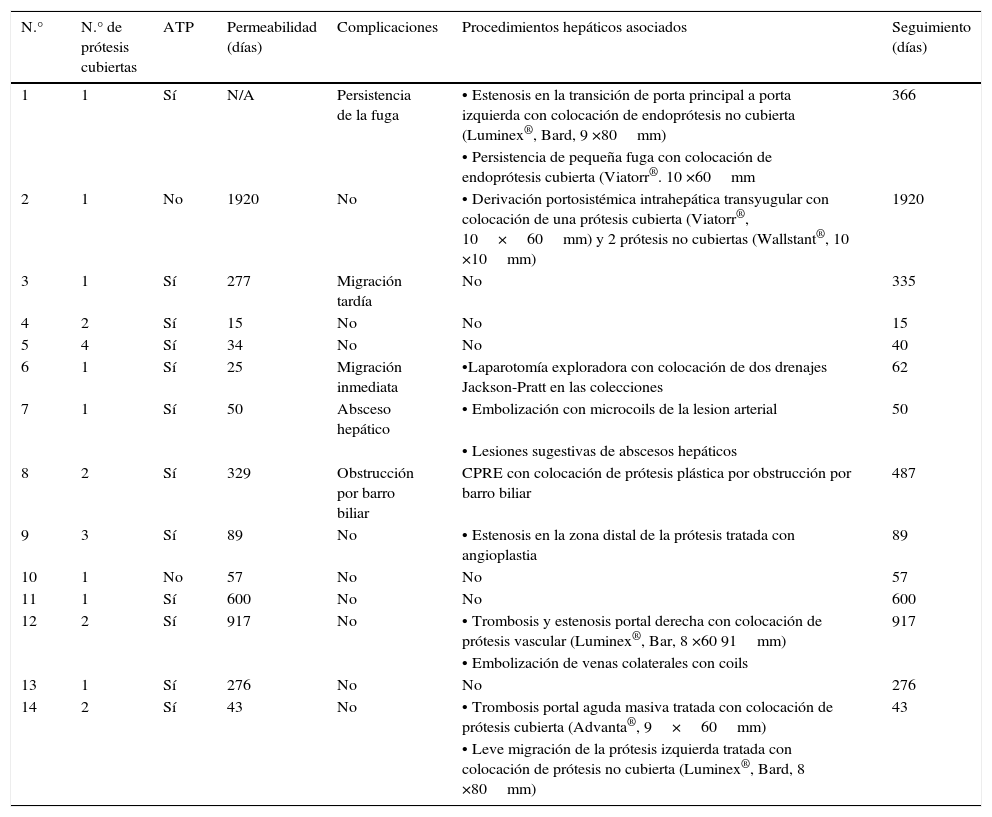Analizar la seguridad y eficacia en el uso percutáneo de endoprótesis metálicas autoexpandibles recubiertas (EMAR) en pacientes con fuga biliar.
Material y métodosEste estudio ha sido aprobado por el Comité de Ética de nuestro centro. Se realizó una revisión retrospectiva de las EMAR colocadas entre octubre de 2008 y septiembre de 2015. Se analizaron la enfermedad primaria subyacente, los procedimientos hepáticos previos y el éxito clínico. Se evaluó la localización, el número, el tipo de fuga y las características del procedimiento intervencionista (número de prótesis empleadas, localización, éxito técnico y funcionalidad primaria). Se recogieron las complicaciones registradas.
ResultadosSe estudiaron 14 pacientes. El seguimiento medio fue de 375,5 días (rango de 15-1920 días). En 12 pacientes las fugas biliares fueron posquirúrgicas. Un paciente presentó una fístula arteriobilioportal. En otro paciente, la fuga biliar fue post-CPRE. Se colocaron un total de 23 EMAR: 21 prótesis tipo Fluency® (Bard, Tempe, Arizona, EE.UU.) y dos prótesis tipo Wallflex® (Boston Scientific, Galway, Irlanda). Se consiguió éxito técnico total en el 78,6% (n=11), parcial en el 14,3% (n=2) y no se obtuvo éxito en el 7,2% (n=1). Se consiguió éxito clínico en 13 de 14 pacientes. La media de funcionalidad primaria de las EMAR fue de 331 días (rango de 15-1920 días). Once pacientes no presentaron ninguna complicación mayor.
ConclusionesLa colocación percutánea de EMAR es un método seguro y eficaz en el tratamiento de fugas biliares benignas, con una alta tasa de éxito técnico y clínico y un nivel moderado de complicaciones.
To analyze the safety and efficacy of percutaneous placement of coated self-expanding metallic stents (SEMS) in patients with biliary leaks.
Material and methodsThis ethics committee at our center approved this study. We retrospectively reviewed all coated SEMS placed between October 2008 and September 2015. We analyzed patient-related factors such as the primary underlying disease, prior hepatic procedures, and clinical outcome. We evaluated the location, the number and type of leak (anastomotic or non-anastomotic), and the characteristics of the interventional procedure (number of stents deployed, location of the stents, technical success, and primary functionality). We recorded the complications registered.
ResultsWe studied 14 patients (11 men and 3 women). The mean follow-up period was 375.5 days (range 15-1920 days). Leaks were postsurgical in 12 patients. One patient developed an arteriobilioportal fistula. In another, the biliary leak occurred secondary to the rupture of the common bile duct after ERCP. A total of 23 coated SEMS were placed, including 21 Fluency® stents (Bard, Tempe, AZ, USA) and 2 Wallflex® stents (Boston Scientific, Galway, Republic of Ireland). The technical success of the procedure was considered total in 11 (78.6%) patients, partial in 2 (14.3%) patients, and null in 1 (7.2%) patient. The clinical outcome was good in 13 of the 14 patients. The mean period of primary functionality of the coated SEMS was 331 days (range 15-1920 days). No major complications were observed in 11 (78.6%) patients.
ConclusionsPercutaneous placement of coated SEMS for the treatment of benign biliary leaks is safe and efficacious, with a high rate of technical and clinical success and a moderate rate of complications.
Artículo
Comprando el artículo el PDF del mismo podrá ser descargado
Precio 19,34 €
Comprar ahora














